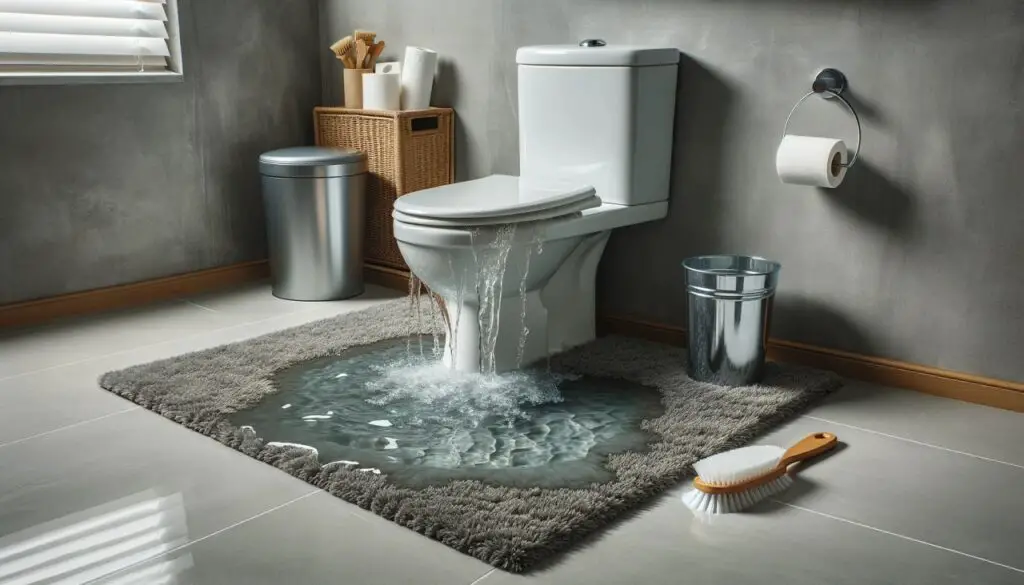If you’re wondering how to clean carpet after toilet overflow, you’re in the right place. This comprehensive guide will help you clean, disinfect, and restore your carpet to its former condition, step by step.

What You’ll Need
Before diving into the cleaning process, gather all necessary supplies to make the process efficient and effective. You will need:
- Disposable gloves: To protect your hands from contaminants.
- Face mask: A face mask will help protect you from inhaling potentially harmful bacteria.
- Wet/Dry Vacuum Cleaner: This is essential for removing excess water from the carpet.
- White vinegar: Acts as a natural disinfectant.
- Water: Needed for diluting vinegar and rinsing the carpet.
- Baking soda: Helpful for absorbing odors.
- Carpet cleaner with enzymes: Specifically designed to break down organic matter.
- Soft bristle brush: For scrubbing the carpet.
- Towels: To absorb any remaining moisture.
- Fan or air mover: For drying the area thoroughly.
Initial Assessment
Before you start, it’s crucial to assess the situation properly. How extensive is the overflow? Which areas of the carpet are affected? Is it localized to a small area or has it spread over a larger section? Understanding the scope of the issue will allow you to strategize how to clean carpet after toilet overflow more effectively.
Step 1: Safety First
The first and foremost step in the process is ensuring your safety. Don a pair of disposable gloves and a face mask to protect yourself from exposure to harmful bacteria and pathogens. Open windows and doors to ventilate the area well. These initial safety measures are not just a precaution; they are a necessity when dealing with toilet overflows.
For more articles like this one click here – Carpet Cleaning Guide: Navigating the Maze of Muck and Stains
Step 2: Remove Excess Water
Now that you are adequately protected, the next step is to remove as much water as possible from the carpet. Using a wet/dry vacuum cleaner, go over the affected area multiple times to suck up the water. Take your time with this step as rushing may push the water further into the carpet, complicating the cleaning process.
Step 3: Apply Vinegar and Water Mixture
Create a mixture of one part white vinegar and two parts water in a spray bottle. Spray this over the affected carpet area. White vinegar acts as a disinfectant and will neutralize bacteria. Don’t oversaturate the carpet; a light mist is sufficient. Allow this mixture to sit for about 10-15 minutes for effective disinfection.
Step 4: Sprinkle Baking Soda
After letting the vinegar mixture sit, the next step is to sprinkle a generous layer of baking soda over the carpet. Baking soda not only helps absorb moisture but also acts as a deodorizer, helping to eliminate unpleasant smells. Let the baking soda sit for another 10-15 minutes.
Step 5: Apply Enzyme Cleaner
Enzyme cleaners are highly effective for organic stains and odors, making them an excellent choice for cleaning carpets after a toilet overflow. Apply the cleaner as per the manufacturer’s directions. Use a soft-bristle brush to gently scrub the area, making sure to work the cleaner deep into the carpet fibers.
Step 6: Rinse and Vacuum
Once the enzyme cleaner has done its work, it’s time to rinse the carpet. Use clean water for this. After rinsing, use the wet/dry vacuum cleaner again to remove excess water from the carpet. Make sure to go over the area multiple times to get as much water out as possible.
Step 7: Dry the Area
Lay down towels over the cleaned area and press down to absorb any remaining moisture. Finally, use a fan or air mover to completely dry the area. Drying may take several hours, but it’s essential for preventing mold growth.
Step 8: Final Assessment
Once everything is dry, examine the carpet carefully. If you still detect odors or see any staining, you may need to repeat some of the cleaning steps. In severe cases, consult a professional carpet cleaning service.
Additional Tips and Precautions
Now that you have successfully learned how to clean carpet after toilet overflow, you might be wondering what steps you can take to prevent such incidents in the future or how to maintain the cleanliness of your carpet. Here are some additional tips and precautions:
- Regularly Inspect Plumbing: One of the proactive measures you can take is to regularly check the plumbing in your bathroom to ensure everything is working correctly.
- Immediate Action: The sooner you act upon discovering a toilet overflow, the easier it will be to clean and disinfect the affected areas. Time is of the essence.
- Professional Cleaning: In some cases, it’s best to hire professional carpet cleaners, especially for severe overflows or if you have a large area to clean.
- Carpet Replacement: If your carpet has been repeatedly affected by toilet overflows or if it’s an old carpet, you might want to consider replacing it entirely.
- Insurance: Check if your homeowner’s insurance covers damage from toilet overflows, as some policies do offer coverage for such incidents.
Conclusion: How to Clean Carpet After Toilet Overflow
Learning how to clean carpet after toilet overflow is essential for every homeowner. It’s an unpleasant task, but with the right approach and materials, you can get your carpet looking and smelling as good as new.
Remember to always prioritize safety and don’t hesitate to seek professional help for severe cases. Keep your supplies ready and act quickly to minimize damage and make the cleaning process as efficient as possible.